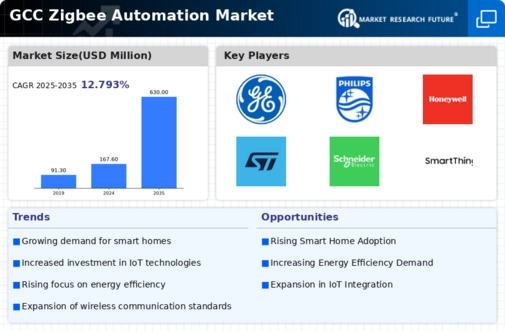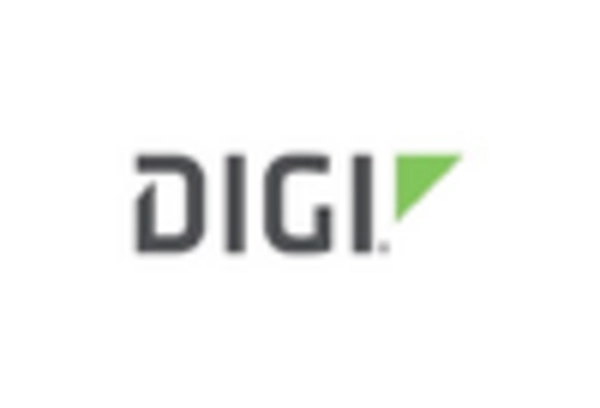Growing Urbanization
Urbanization in the GCC is accelerating, with cities expanding rapidly and populations increasing. This demographic shift is creating a heightened demand for smart solutions that enhance living conditions and streamline urban management. The zig bee-automation market is poised to benefit from this trend, as urban areas require advanced automation systems for efficient resource management, security, and connectivity. As of 2025, urban areas in the GCC are projected to house over 80% of the population, necessitating the implementation of smart technologies. Zig bee solutions can facilitate seamless communication between devices, improving the quality of life for residents and making urban environments more sustainable. This growing urbanization is thus a critical driver for the zig bee-automation market.
Rising Consumer Awareness
Consumer awareness regarding the benefits of automation is on the rise in the GCC, significantly impacting the zig bee-automation market. As individuals become more informed about smart home technologies, there is an increasing demand for solutions that enhance convenience, security, and energy management. Surveys indicate that over 60% of consumers in the region are now considering smart home devices, reflecting a shift in purchasing behavior. This heightened awareness is encouraging manufacturers to innovate and offer more user-friendly zig bee-enabled products. Consequently, the zig bee-automation market is likely to expand as consumers actively seek out these technologies, driving sales and fostering competition among providers.
Technological Advancements
The zig bee-automation market is benefiting from rapid technological advancements that enhance the functionality and appeal of smart devices. Innovations in wireless communication, sensor technology, and data analytics are enabling more sophisticated automation solutions. In the GCC, the proliferation of 5G networks is expected to further boost the capabilities of zig bee devices, allowing for faster and more reliable connections. This technological evolution is likely to attract both consumers and businesses to invest in zig bee automation, as they seek to leverage the latest advancements for improved efficiency and convenience. As a result, the zig bee-automation market is positioned for growth, driven by these ongoing technological developments.
Increased Energy Efficiency
The zig bee-automation market is experiencing a notable shift towards energy-efficient solutions, driven by rising energy costs and environmental concerns. In the GCC region, energy consumption has surged, prompting both consumers and businesses to seek automation technologies that optimize energy use. Zig bee-enabled devices facilitate real-time monitoring and control of energy consumption, potentially reducing energy bills by up to 30%. This trend aligns with the GCC's commitment to sustainability and reducing carbon footprints, as governments encourage the adoption of smart technologies. The integration of energy-efficient solutions in the zig bee-automation market not only enhances user convenience but also contributes to broader environmental goals, making it a pivotal driver in the industry.
Supportive Government Initiatives
Government initiatives in the GCC are playing a crucial role in promoting the zig bee-automation market. Various national strategies aim to enhance digital transformation and smart city development, creating a favorable environment for automation technologies. For instance, investments in infrastructure and incentives for adopting smart solutions are becoming increasingly common. The GCC governments are also focusing on regulatory frameworks that support the integration of automation technologies in various sectors, including residential, commercial, and industrial applications. This supportive stance is likely to stimulate growth in the zig bee-automation market, as businesses and consumers are encouraged to adopt these innovative solutions.















Leave a Comment